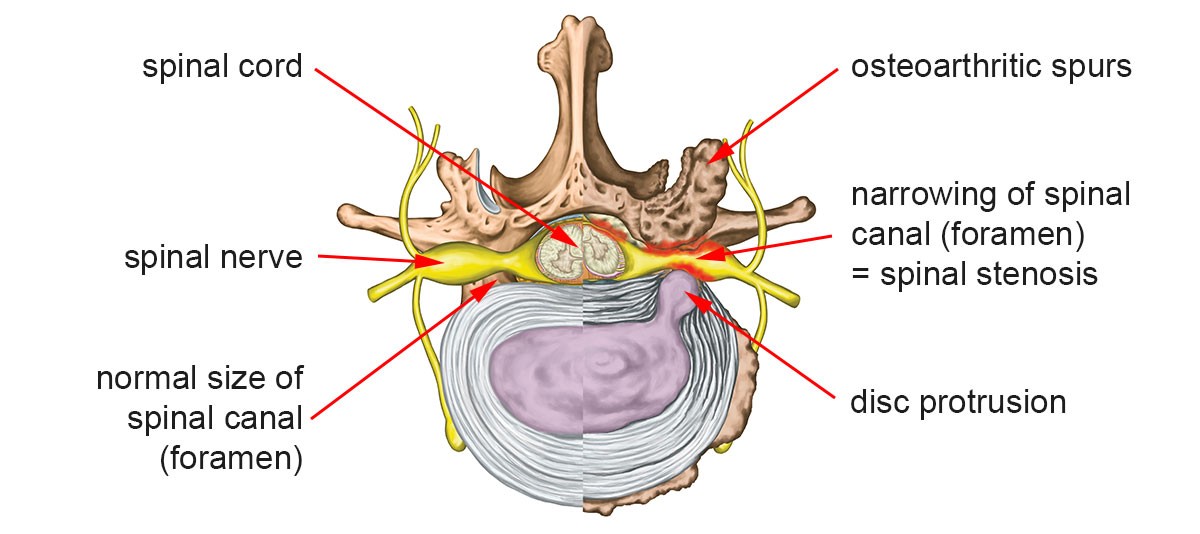This common condition occurs when the small canal (foramen), which contains the spinal cord and nerve roots becomes narrowed.
This causes compression or pinching of the cord and/or nerve roots which often leads to pain and other symptoms.

Usually, the narrowing of the foramen is created by general ‘wear and tear’ of the spine and increases with age. The most common causes are degenerative changes (osteoarthritis) in the column and the discs between the vertebrae.
It may also be caused by thickening of the ligaments, bulging or herniated discs, backward slippage of the vertebrae and trauma.
Not everyone with this condition will develop symptoms if a nerve gets compressed and trapped, however, if symptoms are triggered they tend to only affect one side of the body and can include:
Symptoms often start slowly and get worse over time. Typically, a person with this condition complains of severe pain in the lower back, legs and calves when standing or walking.
Pain may come more quickly when walking up or down a hill, a ramp or steps.
Usually, it is relieved by sitting down or bending forward. When the condition progresses in severity, symptoms may become more constant which can, therefore, result in permanent nerve injury.
At The Disc Doctor we use non-surgical Spinal Decompression Therapy for patients with Spinal Stenosis. The non-invasive table that we use gently pulls and releases the spine creating space in the canal.
This relieves pressure on the nerves and hence decreases pain and other related symptoms.
Get in touch with Chiropractor and Spinal Decompression Therapy expert, Dr Milan on 02 9734 0044 for your complimentary initial consultation.